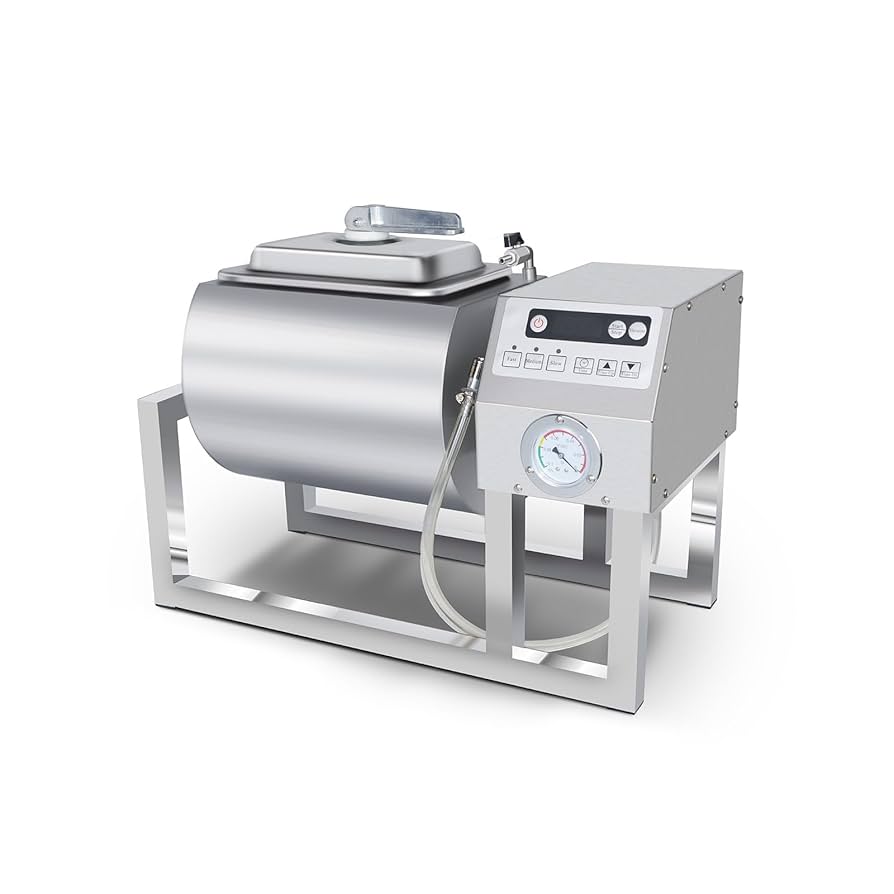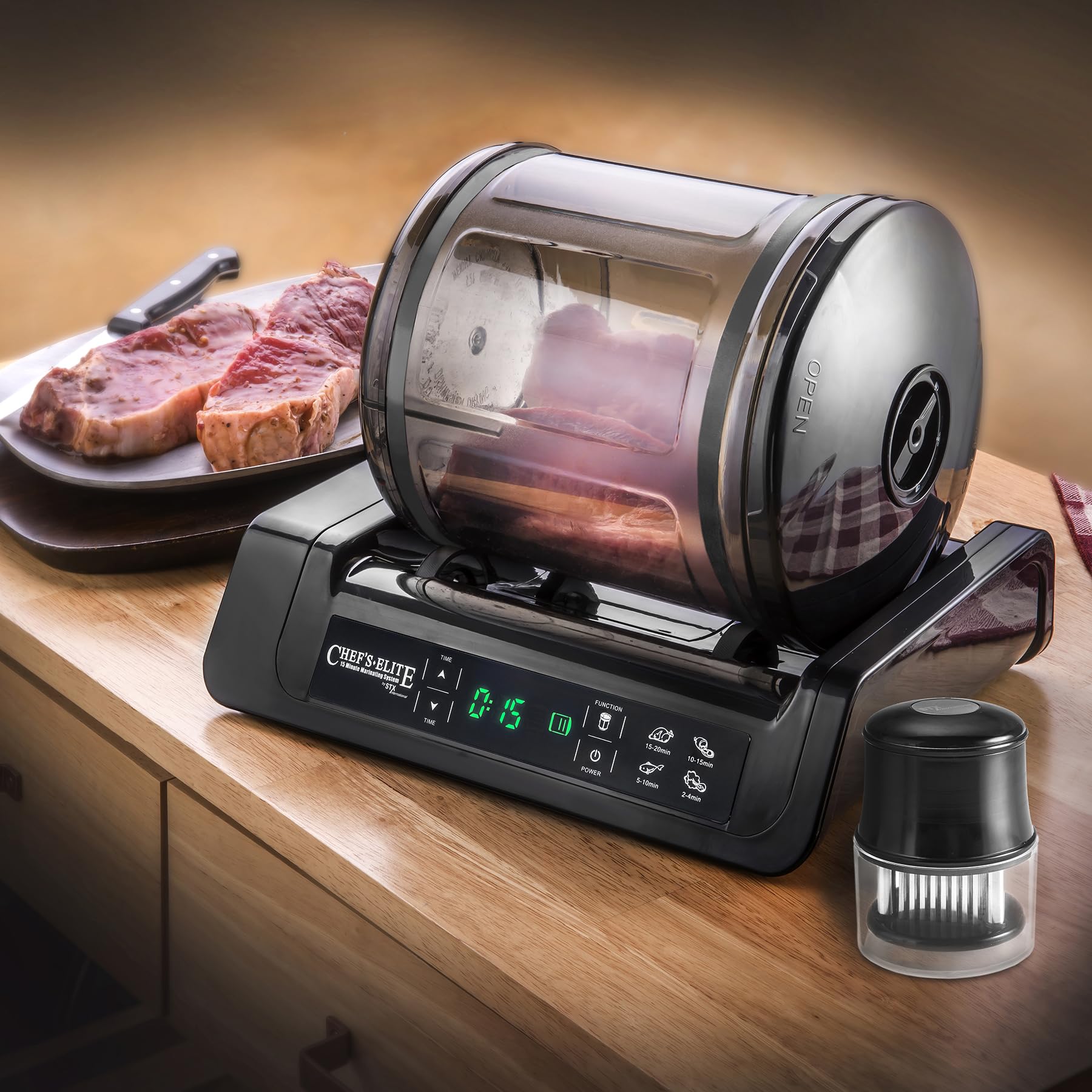10 years of experience as a food machinery equipment manufacturer
10 years of experience as a food machinery equipment manufacturer
Marination, a timeless culinary technique, has long been employed to enhance the flavor, tenderness, and moisture content of various food products, particularly meats. Traditionally, this process involves soaking food items in a seasoned liquid for extended periods. However, modern food processing and culinary arts demand greater efficiency, consistency, and depth of flavor infusion. This has led to the development of specialized equipment, among which the marinating vacuum tumbler stands out as a significant innovation.

This technology fundamentally changes the marination landscape by optimizing the interaction between the food product and the marinade, achieving results that are often superior to static soaking methods in a fraction of the time.
Conventional marination relies on the slow processes of diffusion and osmosis. Flavor molecules and salt from the marinade gradually penetrate the surface of the food, while moisture exchange also occurs. The effectiveness of this method is influenced by several factors, including the type and cut of meat, the composition of the marinade, temperature, and, crucially, time. For tougher cuts or larger pieces of meat, achieving deep and even penetration can take many hours, sometimes even days.
This prolonged exposure can present challenges. Surface areas might become overly salty or acidic before the interior is adequately seasoned. Furthermore, lengthy marination times tie up resources, space, and inventory, which can be a constraint in commercial settings. The process is largely passive, relying on molecular movement rather than active assistance to drive the marinade into the product.
A marinating vacuum tumbler is a specialized piece of equipment designed to accelerate and improve the marination process through the combined actions of vacuum application and mechanical tumbling. The core components typically include a rotating drum, a vacuum pump, and a control system.
The process begins by placing the food product (e.g., meat, poultry, seafood) and the marinade into the drum. Air is then evacuated from the drum by the vacuum pump. This removal of air from within the drum and, more importantly, from the interstitial spaces and pores within the food product itself, creates a significant pressure differential. The muscle fibers of the meat expand slightly under vacuum. When the vacuum is subsequently released, or as the product tumbles, the marinade is drawn more readily and deeply into the food product to equalize the pressure.
The tumbling action provides a gentle, continuous massage to the product. This mechanical energy helps to further open up the muscle structure, break down some of the tougher connective tissues, and ensure that all surfaces of the food are consistently exposed to the marinade. The combination of vacuum and tumbling dramatically enhances the rate and depth of marinade absorption.
The adoption of marinating vacuum tumbler technology offers a range of quantifiable advantages in both commercial and specialized culinary applications:
Marinating vacuum tumblers are versatile and find application across various sectors of the food industry. They are indispensable in large-scale meat processing plants producing items like marinated chicken pieces, beef steaks, pork ribs, and deli meats. Restaurants, especially those with high-volume service of marinated items, can benefit significantly from the speed and consistency offered. Butcher shops use them to create value-added products, offering customers pre-marinated cuts ready for cooking.
The technology is suitable for a wide array of proteins, including:
When evaluating marinating vacuum tumblers, several features are important for functionality, durability, and ease of use:

To maximize the benefits of a marinating vacuum tumbler, users should pay attention to several operational aspects. Strict adherence to cleaning and sanitation protocols is non-negotiable to prevent microbial contamination and ensure food safety. The optimal parameters – including vacuum level, tumbling speed, duration of tumbling versus resting phases, and total processing time – will vary depending on the specific product (type of meat, cut, thickness), the marinade formulation, and the desired end characteristics. Experimentation and careful record-keeping are often necessary to fine-tune these parameters. Over-tumbling, for instance, can damage delicate products or lead to an undesirable texture.
The marinating vacuum tumbler represents a significant advancement over traditional marination techniques. By leveraging the power of vacuum and mechanical action, it enables food processors and culinary professionals to achieve superior flavor infusion, enhanced tenderness, and improved product consistency in a dramatically reduced timeframe. This technology not only boosts efficiency and yield but also provides greater control over the marination process, contributing to higher quality end-products. As the food industry continues to seek innovation for quality and efficiency, the marinating vacuum tumbler has firmly established itself as a valuable tool in modern food preparation and processing.
